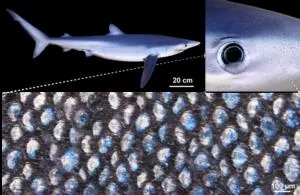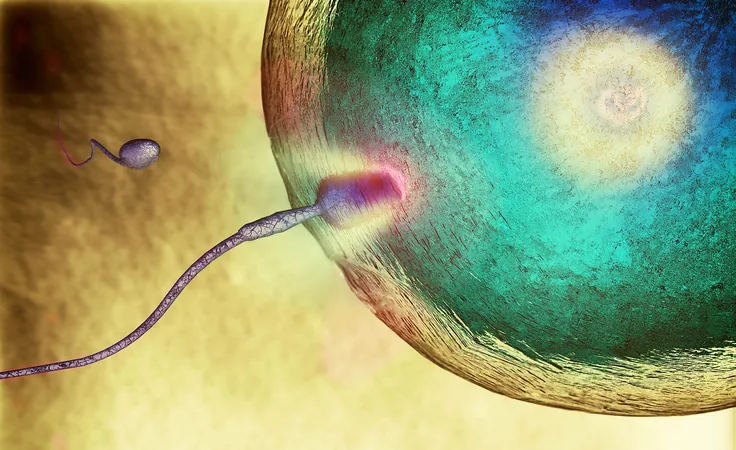
Unlocking the Color-Changing Secrets of Blue Sharks: A Dive into Nature's Nanostructures
2025-07-09
Author: Arjun
A Colorful Discovery Beneath the Waves
Recent research has unveiled an extraordinary aspect of blue sharks (Prionace glauca), revealing that the fabulous blue hue of their skin not only has a unique nanostructure but also hints at a potential for dynamic color change. Dr. Viktoriia Kamska, a post-doctoral researcher at City University of Hong Kong, asserts, “Blue is one of the rarest colors found in the animal kingdom. The evolutionary strategies to produce it are truly fascinating.”
The Science Behind the Stunning Blue
The secret to the blue shark's stunning coloration lies within the pulp cavities of dermal denticles, the tooth-like scales that protect their skin. At the heart of this color mechanism are guanine crystals that function as blue reflectors, paired with melanosomes, which absorb other wavelengths. Dr. Kamska likens this to a combination of bags filled with mirrors and black absorbers, working in tandem for color enhancement. The interplay between melanin pigment and the structured guanine crystals leads to a striking saturation of blue.
Nature's Color-Changing Marvel
Professor Mason Dean elaborates, “Combining these components bestows a remarkable ability to produce and adjust colors. We can observe subtle changes in crystal-containing cells that influence the entire organism's color.” This groundbreaking revelation was achieved through a mix of advanced dissection techniques and imaging methods, including optical and electron microscopy, which helped delineate the architectural designs of these nanostructures. Professor Dean emphasizes, “Understanding color on the nanometer scale requires diverse approaches.”
A Potential for Color Adaptation
Dr. Kamska and her team have confirmed through simulations that minor adjustments in the distances between guanine crystal layers could alter the shark's signature blue into greens and golds. These structural changes may be influenced by environmental factors such as humidity and water pressure. For instance, as sharks dive deeper and experience increased pressure, the guanine crystals could compress, darkening the shark’s color for better camouflage.
Implications for Nature and Industry
This research not only provides insights into shark anatomy and evolutionary biology but also opens up avenues for bio-inspired engineering. Professor Dean notes that these denticles, enabling hydrodynamic efficiency and potential color transformation, showcase a multifunctional design that has never been documented before. Dr. Kamska points out that the structural coloration achieved by these sharks offers a notable advantage over chemical pigmentation, reducing environmental toxicity and pollution. “Structural color can be an effective tool for sustainability, especially in our oceans,” she adds.
A Glimpse into the Future of Color Evolution
As technology in nanofabrication advances, researchers like Professor Dean see an exciting opportunity to explore how evolving structures yield new functionalities. The divergence of sharks and rays from bony fishes hundreds of millions of years ago marks a unique evolutionary journey for color production, promising further revelations about the wonders of marine life.





 Brasil (PT)
Brasil (PT)
 Canada (EN)
Canada (EN)
 Chile (ES)
Chile (ES)
 Česko (CS)
Česko (CS)
 대한민국 (KO)
대한민국 (KO)
 España (ES)
España (ES)
 France (FR)
France (FR)
 Hong Kong (EN)
Hong Kong (EN)
 Italia (IT)
Italia (IT)
 日本 (JA)
日本 (JA)
 Magyarország (HU)
Magyarország (HU)
 Norge (NO)
Norge (NO)
 Polska (PL)
Polska (PL)
 Schweiz (DE)
Schweiz (DE)
 Singapore (EN)
Singapore (EN)
 Sverige (SV)
Sverige (SV)
 Suomi (FI)
Suomi (FI)
 Türkiye (TR)
Türkiye (TR)
 الإمارات العربية المتحدة (AR)
الإمارات العربية المتحدة (AR)